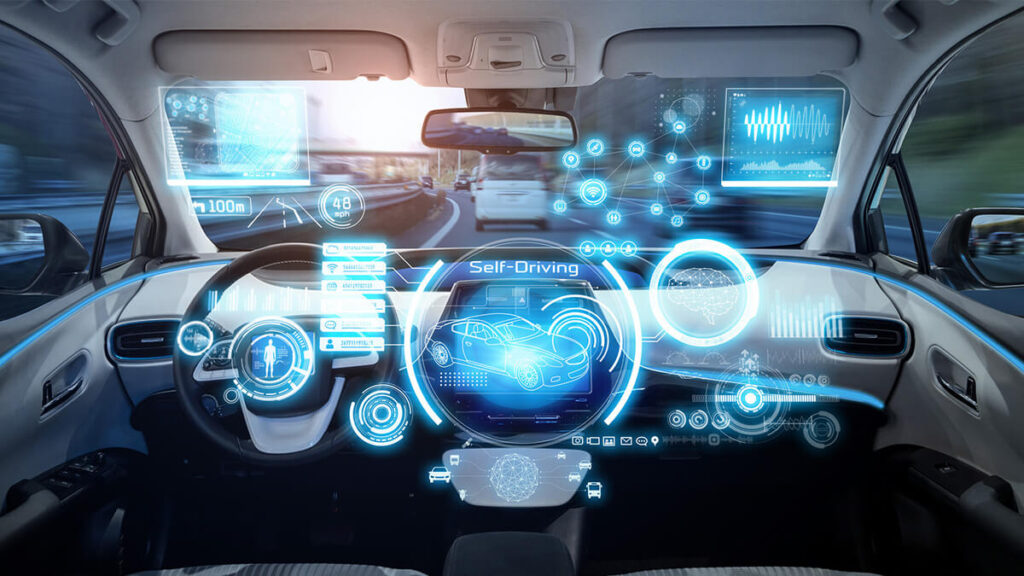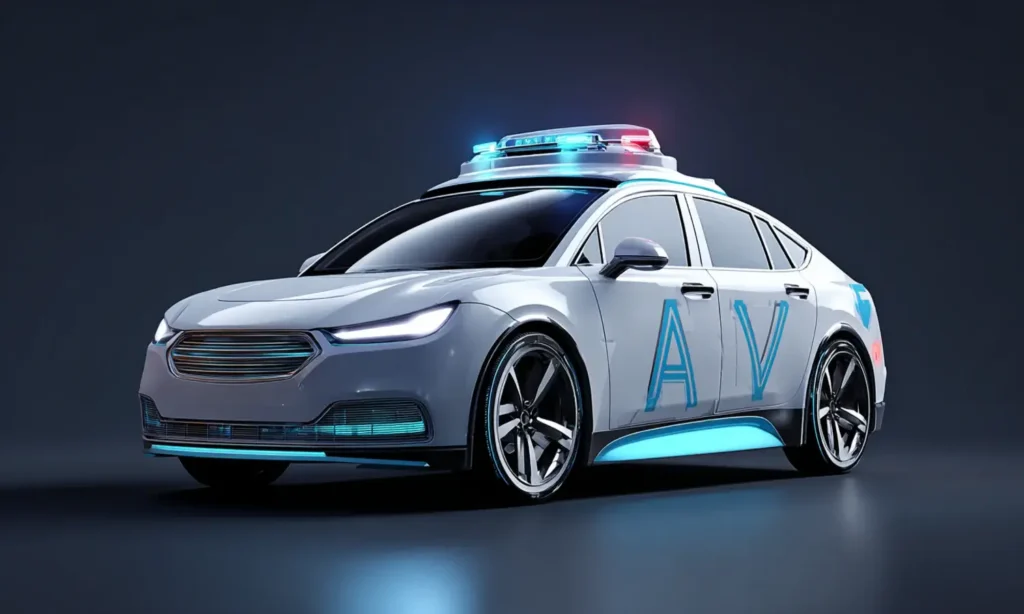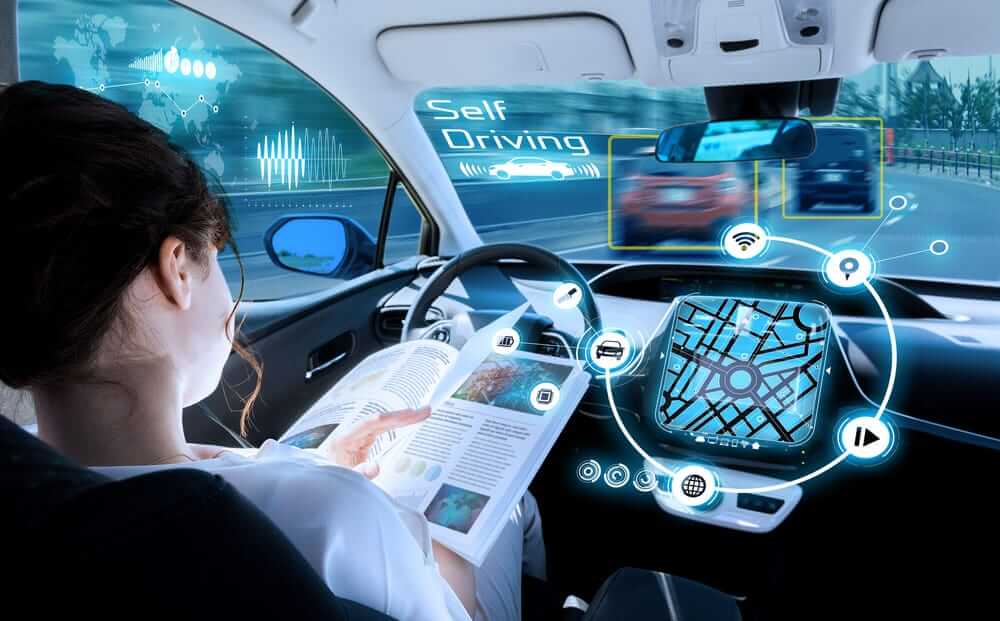Self-driving cars have shifted from sci-fi dreams to real-world prototypes cruising city streets. But what exactly powers these futuristic vehicles? The short answer: Artificial Intelligence (AI)—working in harmony with sensors, cameras, and machine learning systems to perceive, plan, and navigate roads just like a human driver.
This article breaks down how self-driving cars actually work, explaining the complex role of AI and the technologies behind these autonomous vehicles.
Introduction to Autonomous Vehicles
A self-driving car, or autonomous vehicle (AV), is a vehicle capable of sensing its environment and moving safely with little to no human input. Autonomous driving is classified into six levels by the SAE (Society of Automotive Engineers):
- Level 0: No automation
- Level 1: Driver assistance (e.g., adaptive cruise control)
- Level 2: Partial automation (e.g., Tesla Autopilot)
- Level 3: Conditional automation
- Level 4: High automation (no human needed in certain conditions)
- Level 5: Full automation (no human required at all)
In 2025, most commercial systems operate at Levels 2 and 3, with pilots underway at Level 4.
The Core Technologies Behind Self-Driving Cars
Self-driving vehicles rely on a convergence of AI, sensor technologies, and advanced computing. Key components include:
- AI and Deep Learning: Helps vehicles “see” and make decisions
- Sensor Fusion: Combines inputs from multiple sensors for accurate environmental awareness
- Onboard Computing: Processes real-time data at the edge (within the car)
Together, these technologies enable the car to perceive, interpret, and react to its surroundings.
The Role of AI in Driving Automation
Artificial Intelligence powers every layer of autonomous driving:
- Perception: Recognizes road signs, pedestrians, other vehicles, and obstacles
- Prediction: Estimates what other drivers or pedestrians will do next
- Planning: Charts the safest, most efficient path forward
- Control: Executes decisions—steering, braking, acceleration—with precision
This “AI stack” is constantly updating based on new data from the environment and onboard sensors.
Sensors Used in Self-Driving Cars
🔍 Key Sensors Include:
| Sensor | Function |
|---|---|
| LiDAR | Creates 3D maps of surroundings by measuring distances using laser pulses |
| Radar | Detects object speed and range, especially useful in bad weather |
| Cameras | Recognize road signs, traffic lights, lane markings, and more |
| Ultrasonic | Used for parking and close-range object detection |
These sensors overlap in function, providing redundancy and improving safety.
How Data Is Collected and Processed in Real-Time
Self-driving cars generate up to 20TB of data per day. AI systems process this using:
- Edge Computing: Immediate data processing inside the vehicle
- Neural Networks: Learn patterns and improve decision-making
- Simulated Environments: Train AI in virtual worlds to handle rare or dangerous scenarios
Machine Learning in Self-Driving Systems
Machine learning (ML) plays a central role in improving self-driving performance. Systems are trained using:
- Supervised Learning: Labeled datasets from human-driven cars
- Reinforcement Learning: AI agents learning by trial and error in simulators
- Unsupervised Learning: Discovering patterns in unlabeled data for anomaly detection
These learning models continuously evolve with more driving experience and edge-case scenarios.
Mapping and Localization
Self-driving cars use a combination of:
- HD Maps: Detailed 3D maps with centimeter-level accuracy
- GPS: General positioning but not sufficient alone
- SLAM (Simultaneous Localization and Mapping): Updates map data in real time as the car moves
Localization helps the vehicle understand exactly where it is, even in complex environments like urban intersections or tunnels.
Path Planning and Decision Making
AI must not only perceive its surroundings but predict behavior and choose the safest route.
- Behavior Prediction: Understanding how nearby cars or pedestrians might act
- Traffic Rules Compliance: Obeying stop signs, speed limits, and signals
- Obstacle Avoidance: Adjusting path instantly to avoid collisions or debris
This requires split-second decisions, often faster than human reaction time.
Vehicle-to-Everything (V2X) Communication
V2X technology allows self-driving cars to communicate with:
- V2V (Vehicle-to-Vehicle): Share position, speed, and route
- V2I (Vehicle-to-Infrastructure): Receive data from traffic lights, road signs
- V2P (Vehicle-to-Pedestrian): Alert pedestrians via signals or sounds
These systems reduce uncertainty, especially in dense or fast-moving traffic scenarios.
Real-World Examples of Autonomous Vehicle Systems
- Tesla Autopilot & FSD Beta: Vision-based Level 2–3 system with continuous OTA updates
- Waymo: Fully autonomous taxis operating in Phoenix (Level 4)
- Cruise: GM-backed self-driving vehicles tested in San Francisco
- Nvidia Drive: An AI platform powering several OEM and AV startups
Each company uses a unique combination of sensors and AI approaches, but all share the goal of achieving safe, scalable autonomy.
Safety and Redundancy in AI Driving Systems
One of the biggest priorities in autonomous vehicles is fail-safe operation. Redundancy and safety layers are built into every self-driving system to ensure that even if one component fails, the vehicle remains operational and safe.
Key Safety Measures:
- Multi-Sensor Validation: LiDAR, radar, and cameras verify each other’s inputs
- Redundant Computing Units: Backup processors take over if the primary fails
- Over-the-Air (OTA) Updates: Continuous improvement and security patching of software
- Real-Time Error Handling: AI systems can instantly replan routes or stop the vehicle in emergencies
These systems ensure that self-driving cars remain robust in complex and unpredictable environments.
Challenges Facing Self-Driving AI
Despite major progress, several obstacles still stand in the way of full autonomy:
🚧 Common Challenges:
- Edge Cases: Unusual or rare events (e.g., construction zones, fallen debris)
- Adverse Weather: Rain, fog, and snow can reduce sensor accuracy
- Infrastructure Gaps: Poorly marked roads or outdated maps
- Ethical Dilemmas: Split-second decisions in life-or-death scenarios
- Regulatory Uncertainty: Varied laws between regions and countries
Companies must solve these challenges with better AI models, regulatory alignment, and real-world testing.
Ethics and Legal Questions Around AI Driving
Who is responsible when a self-driving car makes a mistake? As AI takes the wheel, new legal and moral questions arise:
- Liability: Is it the car manufacturer, the AI developer, or the passenger?
- Decision Hierarchies: How should AI prioritize safety (e.g., passenger vs pedestrian)?
- Data Privacy: Vehicles collect massive amounts of driver and environmental data
- Transparency: Can companies explain how decisions are made during an incident?
Addressing these issues is essential to building trust and regulatory acceptance.
Future Outlook: When Will Full Autonomy Become Normal?
While some companies claim full autonomy is around the corner, most experts predict widespread Level 4 or Level 5 autonomy by 2030—with initial deployment in:
- Urban ride-sharing (Waymo, Cruise)
- Highway trucking (Aurora, TuSimple)
- Closed ecosystems like airports or campuses
AI readiness, regulatory clarity, and public trust will determine the pace of adoption.
Conclusion
Self-driving cars represent one of the most ambitious uses of artificial intelligence. These vehicles combine real-time perception, planning, control, and learning to navigate the complexities of driving—without human input.
While full autonomy is still a work in progress, the foundation is strong. AI is not just behind the wheel—it’s charting the course of the automotive industry’s future. From everyday commuting to commercial logistics, self-driving technology is set to redefine mobility in the years ahead.


